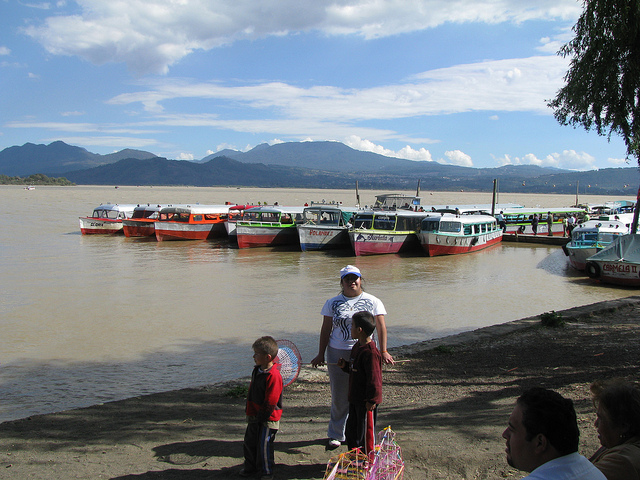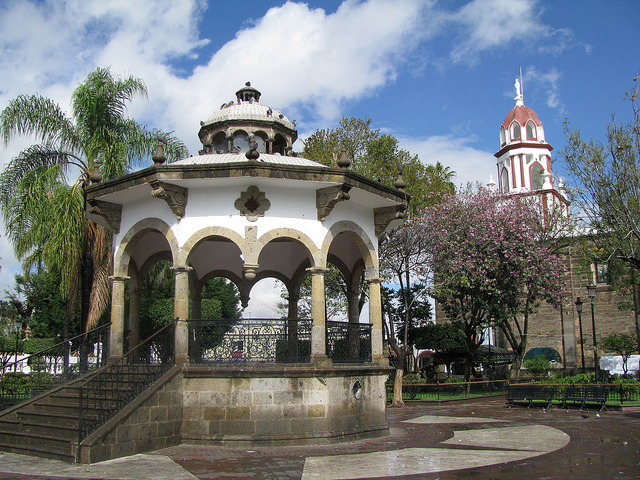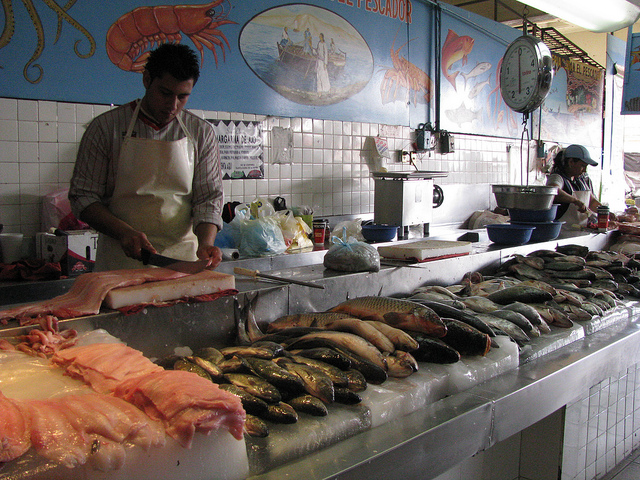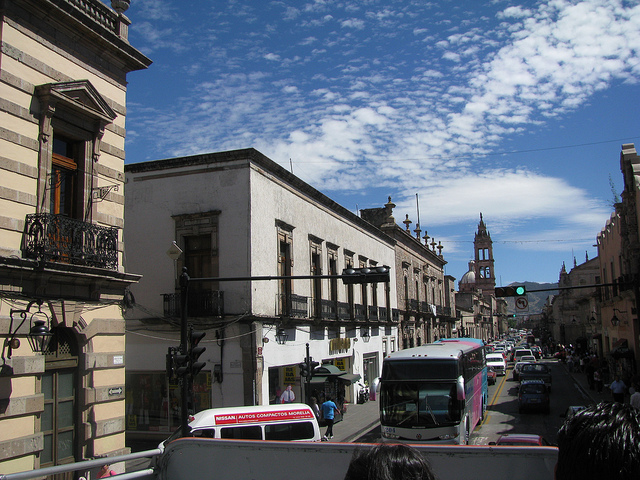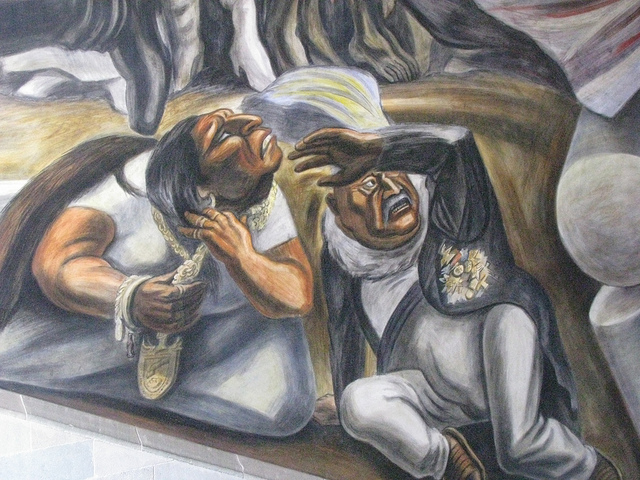We disembarked and started our ascent on the steep walkways of Janitzio. There is no road traffic on this island, and the narrow streets are flanked by street vendors selling local art and souvenirs and restaurants offering traditional fare. At the top of the island is its most famous attraction: a monumental stone statue of Mexico’s independence hero José Maria Morelos. The statue was begun in 1930 and stands guard over the island.

The steep walkways of Janitzio
For a small fee we entered the statue and walked up along a circular walkway, admiring the murals by Ramon Alba de la Canal, one of Mexico’s important muralists. The images depict scenes from the life of Morelos and officially no photography is allowed. At the top, the walkway got even narrower as we entered the outstretched arm of the statue. At its peak is a small area with open windows that allow you to see the entire lake and its surroundings from this elevated vantage point. People have to wait to get up into the outstretched fist of the statue because it can only hold 5 or so people at a time.

View from the outstretched fist of the Morelos statue in Janitzio
As we walked back down, Rodrigo mentioned that Lake Pátzcuaro has five islands of which Janitzio is the most well-known. In front of the statue is a large square surrounded by some retail stalls. On this open space there was a group of local dancers wearing old men’s masks. According to my guide Rodrigo, these masks were worn by indigenous people to mock the Spaniards as the Spanish conquerors seemed to get old quickly in their Mexican surroundings.

Local women from the Purepecha tribe in Janitzio
Now in the late afternoon we started to make our way back through the busy alleyways of Janitzio and back on to one of the ferry boats. After a brief drive we arrived at our last destination of the day: the town of Pátzcuaro, a city of about 80,000 people that is the capital of the municipality. The town was founded around 1320 by the Purepechan tribe and it later became an important ceremonial centre. After the arrival of the Spanish, Vasco de Quiroga, the first bishop of Michoacán, intended to make the town the capital of the New Spain province, but this was later moved to Valladolid, today’s Morelia.

Arrival in the harbour of Pátzcuaro
Pátzcuaro still has a very strong colonial character with its historic arcaded buildings that surround the large Plaza Vasco de Quiroga. The main square was currently under construction to restore the old design. Based on its important history and its outstanding collection of colonial architecture, Pátzcuaro is one of Mexico’s “Pueblo Magicos” (magic villages), a special designation that is awarded by the Mexican Secretariat of Tourism.

One of Pátzcuaro’s old churches
It was now the late afternoon and we went into an restaurant on the main square where I got to enjoy one of my favourite Mexican dishes: “Sopa Tarasca”, a tasty tomato and bean torilla soup. Afterwards Rodgrio recommended that I try “uchepos”, which was composed of very sweet corn-based dough shaped like a cabbage roll that is eaten with cheese and cream. After our filling dinner we walked around the main square where I admired the arcaded walkways in front of the colonial buildings. Most of them housed restaurants or retail stores.

“Uchepos”, sweet rolls of corn dough
